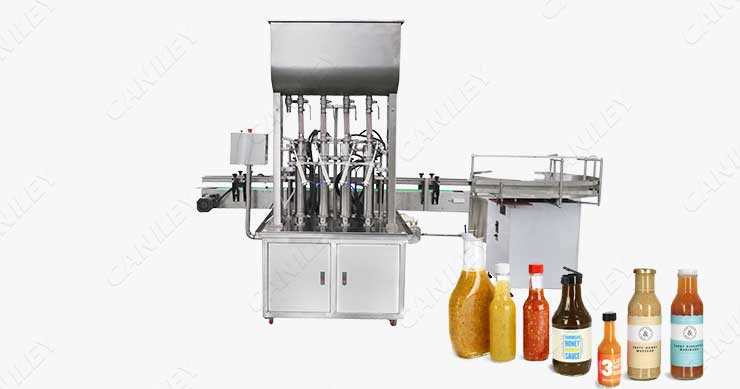What is a piston filler?
Piston filler is a filling machine for filling high-concentration fluids. It extracts and ejects high-concentration materials through the three-way principle that a cylinder drives a piston and a rotary valve. And the reed switch is used to control the stroke of the cylinder, and the filling volume can be adjusted.
Piston filler application:
Used for filling of high concentration materials, such as ketchup, peanut butter, chili sauce, honey, etc.

Features:
- PLC control, operation on touch screen.
- Panasonic servo motor drive, automatically adjust the filling amount on the HMI. E.g. If the user wants to fill 500g of sauce, the user just needs to enter the number 500 and the machine will automatically adjust.
- Specially manufactured rotary valve for viscous materials.
Maintain:
In the food production process, the demands on the environmental conditions are very high. Therefore, when using the filling machine, pay attention to sterilization, ensure cleanliness, and low temperature filling. Before the machine works each time, the temperature of the filling machine tank and the conveying pipeline should be lowered with water of 0-1℃. When the filling temperature exceeds 4℃, the temperature should be lowered first and then the filling operation should be carried out. Use the heat preservation tank to keep the material at a certain constant temperature within the specified time of filling, so as not to cause unstable work due to excessive temperature changes.
The main ways to ensure cleanliness are:
- All pipes, especially those in indirect or direct contact with materials, must be kept clean. Brush every week, flush every day, and sterilize every time you use it.
- The material tank should be brushed and sterilized to ensure that the parts in contact with the material are free from fouling and bacteria.
- The filling equipment should be isolated from other equipment, and the lubrication of the conveyor belt should use special soapy water or lubricating oil. To undergo strict inspection to prevent product contamination.
